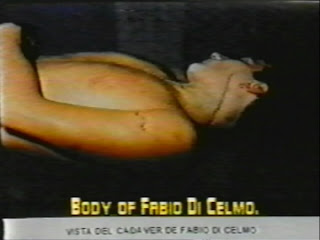But Posada Carriles is not on trial for his terrorist past as a CIA operative. Instead, U.S. prosecutors allege that during immigration hearings in El Paso , Posada Carriles lied about how he gained access to the United States in March 2005, and did not acknowledge his active rol in planning a series of 1997 bombings in Havana
Posada Carriles participated indirectly in the U.S.-backed, unsuccessful Bay of Pigs invasion ofCuba in 1961, and then joined the U.S. Washington, in organizing the supply of aid to the contra rebels in Nicaragua during the Reagan administration Panama Washington
 |
| El asesino que "duerme como un bebé" y una de sus víctimas, un joven italiano |
Posada Carriles participated indirectly in the U.S.-backed, unsuccessful Bay of Pigs invasion of
Posada Carriles has been living freely in Miami since his release from an U.S. immigration detention center in El Paso
U.S. District Judge Kathleen Cardone ruled last month that defense attorney Arturo Hernández would be allowed to question the credibility of the Cuban government and its experts while cross-examining the officials from
 |
| Relatives of the 1976 Cubana airliner bombing victims wait for justice |
Salvadoran bomber Otto Rene Rodriguez, jailed in Cuba in connection with a string of 1990s hotel bombings, told the Associated Press in an exclusive interview Tuesday that he received powerful C-4 explosives and $2,000 in cash directly from Luis Posada Carriles to carry out an Aug. 3, 1997, bombing at Havana's Melia Cohiba hotel. He was captured trying to enter the country on a subsequent trip with 1.5 kilos (3.3 pounds) of C-4 that Posada had given him, he said.
In a further attempt to prevent the real truth from coming out Judge Cardone ruled that jurors could only see a photocopy of the Guatemalan passport and Mexican visa that prosecutors wanted to present as evidence and not the physical documents themselves putting forward a technicality as an excuse, arguing that “the passport had not been sufficiently authenticated to meet federal evidence rules.”
This time US District Judge Cardone had to rule in favor of those documents admitting that they had been properly authenticated and certified by both the governments of Guatemala and Mexico.
Today, two police officers and a state medical examiner from
 |
| Evidence eventually admitted as valid by Judge Cardone |





No comments:
Post a Comment